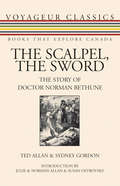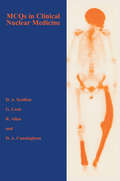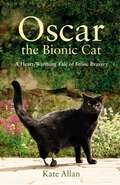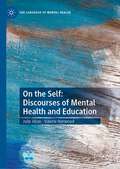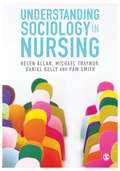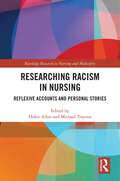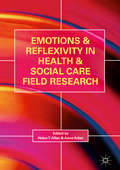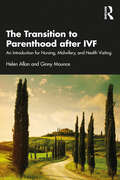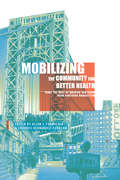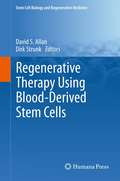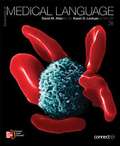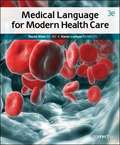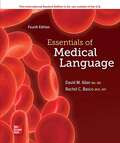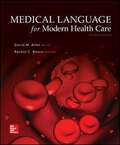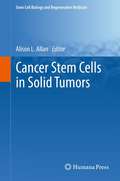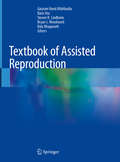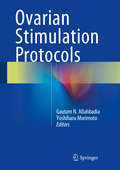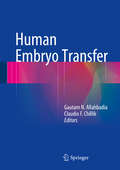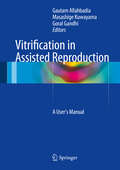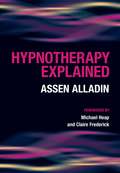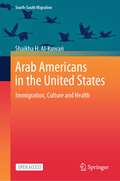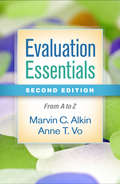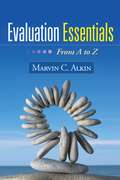- Table View
- List View
Clinical Cases for the FRCA: Key Topics Mapped to the RCoA Curriculum (Master Pass Series)
by Alisha AllanaThe Final FRCA Viva is the last postgraduate examination many trainees will ever take. Preparation is invaluable not only to pass the exam, but also to feel ready to take the next steps to becoming a senior registrar. This book provides short, succinct clinical cases that are mapped to the RCoA curriculum and are suitable for use when teaching or as a viva revision guide. Using this guide will ensure that FRCA exam questions can be answered correctly and confidently. It is suitable primarily for candidates preparing for the Final FRCA, but also helpful for those preparing for Primary FRCA, FFICM and EDIC, as well as for those running teaching courses and simulation programmes.
The Scalpel, the Sword: The Story of Doctor Norman Bethune
by Ted Allan Julie Allan Norman Bethune Allan Susan Ostrovsky Sydney GordonOriginally published in the early 1950s, The Scalpel, the Sword celebrates the turbulent career of Dr. Norman Bethune (1890-1939), a brilliant surgeon, campaigner against private medicine, communist, and graphic artist. Bethune belonged to that international contingent of individuals who recognized the threat of fascism in the world and went out courageously to try to defeat it. Born in Gravenhurst, Ontario, Bethune introduced innovative techniques in treating battlefield injuries and pioneered the use of blood transfusions to save lives, which made him a legend first in Spain during the civil war and later in China when he served with the armies of Mao Zedong in their fight against the invading Japanese. He is today remembered amongst the pantheon of Chinese revolutionary heroes. In Canada Bethune’s strong left-wing views made him persona non grata, but this highly readable and engaging account has helped to sustain the memory of a great man.
MCQS in Clinical Nuclear Medicine
by Rosie Allan Gary J. Cook Deborah Cunningham David ScullionWritten specifically for those candidates about to sit for the FRCR part II examination, the format will also be of use to other trainee radiologists who are not specialists in this field. It contains a number of multiple choice questions covering all aspects of nuclear medicine with particular emphasis on the more common techniques, ie bone, renal and lung scanning. Extensive use is made of review articles, and important articles in the major nuclear medicine journals and references are provided.
Oscar: A Heart-Warming Tale of Feline Bravery
by Kate AllanWhen Kate’s beloved cat, Oscar, is found with both hind legs severed by a combine-harvester, Noel Fitzpatrick, star of Channel 4's The Supervet, agrees to try pioneering surgery to replace his legs with prosthetics. This is the amazing account of a feline destined to become the world’s first bionic cat.
Oscar: A Heart-Warming Tale of Feline Bravery
by Kate AllanWhen Kate’s beloved cat, Oscar, is found with both hind legs severed by a combine-harvester, Noel Fitzpatrick, star of Channel 4's The Supervet, agrees to try pioneering surgery to replace his legs with prosthetics. This is the amazing account of a feline destined to become the world’s first bionic cat.
On the Self: Discourses of Mental Health and Education (The Language of Mental Health)
by Julie Allan Valerie HarwoodThis book examines the emergence of psychologised discourses of the self in education and considers their effects on children and young people, on relationships both in and out of school and on educational practices. It undertakes a Foucauldian genealogy of the discourses of the self in education in order to scrutinise the ‘focal points of experience’ for children and young people. Part One of the book offers a critical analysis of the discourses of the self that operate within interventions of self esteem, self concept, self efficacy and self regulation and their incursions into education. Part Two provides counter-narratives of the self, drawn principally from the arts and politics and providing alternative, and potentially radical, ways of when and how the self might speak. It also articulates how teachers may support children and young people in giving voice to these counter-narratives as they move through school.
Understanding Sociology in Nursing
by Helen Allan Michael Traynor Pam Smith Daniel KellyProvides students with insights into key contemporary debates and events to demonstrate the relevance of sociology and its practical application to modern nursing. This textbook helps student nurses make the leap from a narrow focus on the physical problems of their patients to a broader understanding of the whole person and the contexts of care which will help them succeed as compassionate nurses. Written directly for nurses, it focuses on the individuals and families in their care, the organisations they work in, and the factors which affect their practice. Key features include: * Case studies and scenarios to help students relate sociology to real life examples * Reflection points to help students critically engage with the discussion * Learning outcomes and chapter summaries for revision * Definitions of key terms in each chapter
Researching Racism in Nursing: Reflexive Accounts and Personal Stories (Routledge Research in Nursing and Midwifery)
by Helen Allan Michael TraynorResearch shows that racism affects the working lives of nurses and nurse academics, as well as healthcare service delivery and outcomes. This book looks at the impact of racism, from experiences of microaggression to discrimination and structural and institutionalised racism. Focusing on the work of five researchers and practitioners who have chosen to address and investigate the racism they experience, witness or observe in the UK’s National Health Service and Universities, this book includes personal reflections on their findings. The substantive chapters are framed by a discussion of policy and research on racism, thoughts on research supervision within this field and a drawing together of the key themes developed through the book. Giving voice to nurses’ and lecturers’ responses to racism in nursing education and practice, this is an important contribution for students, researchers and practitioners with an interest in health inequalities, healthcare organisations, research methods and workforce development.
Emotions and Reflexivity in Health & Social Care Field Research
by Helen T. Allan Anne ArberThis book is about emotions and reflexivity when doing field research in health and social care settings. Health and social care students often undertake field research in their own area of practice using observation and interviews. All contributing authors have a dual identity as researchers and health or social care professionals. Their chapters draw on research carried out in a number of fields including HIV related infertility and adoption, primary care in Africa, cancer and palliative care, infertility and excluded young people to explore issues relevant to emotions and reflexivity from the perspective of the researcher and research participants. The book was born of the two editors, who are experienced research supervisors, observing that many PhD students struggle to manage the emotions elicited in the field when researching. They identify three main causes - health and social care deals with painful topics; observation and interviews bring student into contact with powerful feelings which need processing; there is very little advice and discussion of how a PhD student manages emotions in the field and students therefore frequently struggle on their own. This insightful volume will be of great interest to scholars and students in all areas of academic study, but particularly to those who chose to study health and social care whether they are professionals or not.
The Transition to Parenthood after IVF: An Introduction for Nursing, Midwifery and Health Visiting
by Helen Allan Ginny MounceThis book explores how experiences of IVF can affect the transition to parenthood for non-donor infertile couples. Drawing on empirical research and the broader social sciences literature, the book sets out the context of complex modern family building and discusses how infertility and IVF continue to shape parenthood and family building after successful IVF conception. It looks at how stigma, disclosure, loss, and gender affect the transition to parenthood, as well as what happens when parents start thinking about trying for siblings. We highlight the key roles for health care professionals (nurses, midwives, and health visitors) when caring for these new parents, in providing social support and facilitating good communication to foster emotional well-being. Ideal for nurses and midwives working in reproductive health as well as primary care nurses and health visitors, this applied text is a key reference for all healthcare professionals who meet people at any point on their journey to achieving pregnancy through IVF, during maternity care, and through the first few years of parenthood.
Mobilizing the Community for Better Health: What the Rest of America Can Learn from Northern Manhattan
by Formicola Allan Lourdes Hernandez-Cordero Eds.From 1999 to 2009, The Northern Manhattan Community Voices Collaborative put Columbia University and its Medical Center in touch with surrounding community organizations and churches to facilitate access to primary care, nutritional improvement, and smoking cessation, and to broker innovative ways to access healthcare and other social services. This unlikely partnership and the relationships it forged reaffirms the wisdom of joining "town and gown" to improve a community's well-being.Staff members of participating organizations have coauthored this volume, which shares the successes, failures, and obstacles of implementing a vast community health program. A representative of Alianza Dominicana, for example, one of the country's largest groups settling new immigrants, speaks to the value of community-based organizations in ridding a neighborhood of crime, facilitating access to health insurance, and navigating the healthcare system. The editors outline the beginnings and infrastructure of the collaboration and the relationship between leaders that fueled positive outcomes. Their portrait demonstrates how grassroots solutions can create productive dialogues that help resolve difficult issues.
Regenerative Therapy Using Blood-Derived Stem Cells
by David S. Allan Dirk StrunkBlood has long been viewed as a conduit for therapy, stemming from the ancient days of phlebotomy to remove evil humors to the development of successful blood transfusions to replace missing blood components. The identification and characterization of hematopoietic stem cells by Drs. Till and McCulloch revolutionized the field and soon after, non-hematopoietic stem and progenitor cells were characterized from the blood and bone marrow. Some of these cell types and various blood-derived cell lineages are involved in the repair of various types of tissue damage that span the spectrum of medical disorders. The goal of this book is to provide an up-to-date review of the various types of blood-derived cells with regenerative capacity, identify opportunities for intervention by examining specific clinical applications, and recognize the regulatory environment that will encompass future therapies in regenerative medicine.
Essentials of Medical Language (2nd Edition)
by David M. Allan Karen D. LockyerThis book presents new medical terminology to students in manageable quantities via short lessons and a 2-page spread format. This edition offers a completely redesigned learning experience through larger, more focused art and revised table of contents.
Medical Language For Modern Health Care (Third Edition)
by David Allan Karen LockyerMedical Language for Modern Health Care, third Edition, uses a Contextual Learning approach to introduce medical terminology within a healthcare environment. Chapters are broken into lessons that present and define terminology through the context of A & P, pathology, as well as clinical and diagnostic procedures. The text is setup in a way that covers one topic at a time, offering contextual content, tables, and exercises all in one place. Word Analysis and Definition Tables provide a color-coded guide to word parts and combining forms, as well as definitions and pronunciations. Now featuring newly added chapters covering Geriatrics, Oncology, Radiology, and Pharmacology. With unfolding patient case studies and documentation, students are introduced to various roles in the healthcare environment, illustrating the real-life application of medical terminology.
Essentials of Medical Language
by David Allan Rachel BascoEssentials of Medical Language will help you learn the terminology and language of modern health care in a way that bridges the gap between the classroom and a clinical setting. This textbook provides you with terminology, exercises, images and examples you can apply to other courses and within your career. You will step into the role of a health professional in every chapter and experience medical language illustrated through authentic patient cases.
Medical Language for Modern Health Care
by David Allan Rachel BascoMedical Language for Modern Health Care, Fourth Edition, uses a Contextual Learning approach to introduce medical terminology within a healthcare environment. Chapters are broken into lessons that present and define terminology through the context of A & P, pathology, diagnostic and therapeutic procedures as well as pharmacology. The text is setup in a way that covers one topic at a time, offering contextual content, tables, and exercises all in one place. Word Analysis and Definition Tables provide a color-coded guide to word parts deconstruction, definitions and pronunciations. Chapters covering Geriatrics, Oncology, Radiology, and Pharmacology offer comprehensive topics coverage. With unfolding patient case studies and documentation, students are introduced to various roles in the healthcare environment, illustrating the real-life application of medical terminology.
Cancer Stem Cells in Solid Tumors (Stem Cell Biology and Regenerative Medicine)
by Alison L. AllanThe "cancer stem cell" hypothesis postulates that cancer arises from a subpopulation of tumor-initiating cells or cancer stem cells (CSCs). While the idea of cancer stem cells has been around for more than a hundred years, evidence from the fields of hematology and cancer biology has now demonstrated the critical role of stem cells in hematological malignancies and suggested that these same mechanisms are also central to the initiation, progression, and treatment of solid cancers. Clinical and experimental studies have shown that CSCs exhibit many classical properties of normal stem cells, including a high self-renewal capacity and the ability to generate heterogeneous lineages; the requirement for a specific "niche"/microenvironment to grow; and an increased capacity for self-protection against harsh environments, toxins, and drugs. Cancer Stem Cells in Solid Tumors represents a detailed overview of cancer stem cells and their role in solid cancers. Comprised of 24 chapters, this volume will provide readers with a comprehensive understanding of this important and evolving field. Topics covered include: Introduction of the CSC hypothesisHistorical perspectives and the contributing lessons from leukemiaCurrent knowledge regarding the identification and role of CSCs in various forms of solid cancer including breast, brain, colorectal, pancreatic, prostate, melanoma, lung, ovarian, hepatocellular, and head and neck cancer Molecular pathways involved in driving CSC function, with a particular focus on the novel convergence of embryonic and tumorigenic signaling pathways In vitro and in vivo assays, model systems, and imaging modalities for studying CSCsThe clinical importance of CSCs for cancer management and treatment, including important implications for prognosis, prediction, and treatment resistanceConsideration of the controversy surrounding the CSC hypothesis and important unanswered questions in this field This collective work was written by a group of prominent international experts in cancer biology, oncology, and/or stem cell biology. It will serve as a valuable resource for established researchers, professors, health care professionals, and students in the medical and scientific community who are investigating stem cells and/or oncology.
Textbook of Assisted Reproduction
by Gautam Nand Allahbadia Baris Ata Steven R. Lindheim Bryan J. Woodward Bala BhagavathGroundbreaking, comprehensive, and developed by a panel of leading international experts in the field, Textbook of Assisted Reproduction provides a multidisciplinary overview of the diagnosis and management of infertility, which affects 15% of all couples around the world. The book aims to cover all aspects of assisted reproduction. Particular attention is given to topics such as the assessment of infertile couples; assisted reproductive techniques (ARTs) including ovulation induction, intra uterine insemination (IUI), in vitro fertilization (IVF) and intracytoplasmic sperm injection (clinical and laboratory aspects); reproductive genetics; and obstetric and perinatal outcomes.
Ovarian Stimulation Protocols
by Gautam N. Allahbadia Yoshiharu MorimotoOvarian Stimulation Protocols is a concise handbook that aims to deliver everything the reader needs to know for performing a risk-free ovarian stimulation for assisted reproductive technique (ART) and get a favorable outcome. Review of crucial issues such as the significance of monitoring ovarian stimulation, advantages and disadvantages of ovarian hyperstimulation versus minimal stimulation, and the use of various drug regimens and stimulation protocols for various patient sub-sets, will help clinicians in selecting the better or more appropriate protocols. The contributors of this book have leading scientific and clinical backgrounds, with years of experience to support their views. The book serves as a handy practical guide, targeting and settling clinical dilemma that ART practitioners commonly experience in their clinics, while providing a window to the newer developments.
Human Embryo Transfer
by Gautam N. Allahbadia Claudio F. ChillikThis concise work on embryo transfer is yet another contribution to the persevering effort to disseminate latest information on the science and skill of performing a traumatic and successful embryo transfer. It is the most critical culmination of the assisted reproductive technology (ART) stimulation cycle, and a rate-limiting step in dictating the success of treatment. The well-worded chapters draw the reader's attention to significant aspects before initiating the actual embryo transfer, such as possible causes of failure at the embryo transfer stage, uterine evaluation, mock embryo transfer (ET), experience of the physician, and the use of ultrasound-guidance to monitor ET. The protocol for difficult transfers, variables that affect the success of ET, and the influence of the catheter used for ET have also been dealt with. The unique feature of this book is its pragmatic approach that can translate into solutions to the numerous frustrating ART failures that more often than not, may be attributed to an inefficient ET procedure. It helps the reader understand the integrity of embryo transfer, unravel its obvious simplicity and bridge the success between the several steps of ART. By highlighting the impeding problems associated with ET procedure and providing valid, scientific solutions, this stimulating edition will help the readers improve the ART success rates in their clinical practice.
Vitrification in Assisted Reproduction
by Gautam Allahbadia Masashige Kuwayama Goral GandhiAdvances in technology now offer promising solutions to deal with the chronological aging of the cell, tissue or organ to synchronize its existence and its use. This book covers the developments in and benefits of the latest vitrification technology and its extensive applications in reproductive medicine. Protocols of gametes (oocyte and sperm), embryos, blastocysts and ovarian tissue cryopreservation have been reviewed by leaders in the field. In order to address the escalation in cross-border reproductive tourism entailing the transfer of reproductive cells and tissues rather than the patient, the challenges, caution and emerging possibilities of nitrogen vapor shipment of vitrified cells have been discussed. Current perspectives on oocyte banking present the reader with options and solutions to effectively utilize these gametes despite the physiological deterrents. The versatile applications and potential of vitrification of human embryonic stem cells, discussed in the concluding chapter, is an exciting reality offered by vitrification to help overcome numerous stumbling blocks in the management of various disorders.
Hypnotherapy Explained
by Assen Alladin Glenn RobertHypnotherapy provides a powerful tool for utilizing the power of the mind to reduce distress and suffering. This concise guide provides readers with a rich source of ideas on starting hypnotherapy practice, and thinking seriously about hypnosis as a powerful adjunct to psychotherapy and medical interventions. With a clear definition of what hypnosis really is, readers can develop an understanding of the rationale for utilising hypnotherapy with particular disorders.As the medical community is progressively adopting a biopsychosocial model of healing, there is a serious move toward validating the scientific credibility of hypnosis, and hypnotherapy has become a well-established treatment. Unlike any other introductory text, "Hypnotherapy Explained" adopts a uniquely scientific approach among introductory texts; reviewing theories and offering practical ways to integrate hypnotherapy in medical, psychiatric and psychotherapeutic practice. It is enlightening reading for general practitioners, psychiatrists, psychologists and other healthcare professionals.
Arab Americans in the United States: Immigration, Culture and Health (International Perspectives on Migration)
by Shaikha H. Al-KuwariThis open access book provides a unique perspective on the relationship between immigration, culture, and health. It presents a cross-cultural perspective between culture and illness. It touches upon identity struggles, the notion of not feeling “safe, understood, accepted,” and its relation to Arab American health. The book provides a comprehensive review of the history of Muslims in America and discusses better healthcare services for chronic illness—diabetes. It provides an ethnographic framework for building cultural belief models of illness, which helps study any illness among any population. It is a must-read for everyone interested in understanding the relationship among culture, health, and immigration, as well as the importance of building cultural belief models of illness and their possible impact on providing better healthcare services. The book is of interest to scholars, caregivers, and those living with diabetes.
Evaluation Essentials, Second Edition: From A to Z
by Marvin C. Alkin Anne T. VoThoroughly revised and updated, this engaging text has given thousands of students and new evaluators the practical information and expert advice needed to conduct or use evaluations. In 26 concise sections, the book describes how to articulate answerable evaluation questions, collect and analyze data using both quantitative and qualitative methods, and deal with contingencies that might alter the traditional sequence of an evaluation. Special strengths of the text are its attention to individual, organizational, and community culture and emphasis on building collaborative relationships with stakeholders. An in-depth case study and related end-of-section exercises (including group activities) help students put themselves in the evaluator role. Other pedagogical features include section titles written as questions, bulleted recaps of each section, "Thinking Ahead" and "Next Steps" pointers, cautionary notes, and suggestions for further reading. New to This Edition *New and expanded topics: evaluation contracts, budgeting, surveys, data visualization, qualitative coding and memoing, factors affecting evaluation use, and context-sensitive evaluation. *Revised case study with extended exercises that guide the reader to complete a simulated evaluation. *End-of-section "Quick Read" links to recommended American Evaluation Association blog posts. *Four entirely new sections (such as "How Do You Strengthen Relationships with Stakeholders?" and "How Do We Plan a Process-Focused Evaluation Design?"), plus other changes and additions throughout.
Evaluation Essentials
by Marvin AlkinWritten in a refreshing conversational style, this text thoroughly prepares students, program administrators, and new evaluators to conduct evaluations or to use them in their work. The book's question-driven focus and clear discussions about the importance of fostering evaluation use by building collaborative relationships with stakeholders set it apart from other available texts. In 26 concise sections, Marvin C. Alkin explores how to articulate answerable evaluation questions, collect and analyze data using both quantitative and qualitative methods, and deal with contingencies that might alter the traditional sequence of an evaluation. Student-friendly features include handy bulleted recaps of each section, "Thinking Ahead" and "Next Steps" pointers, cautionary notes, annotated suggestions for further reading, and an in-depth case study that provides the basis for end-of-chapter exercises.

